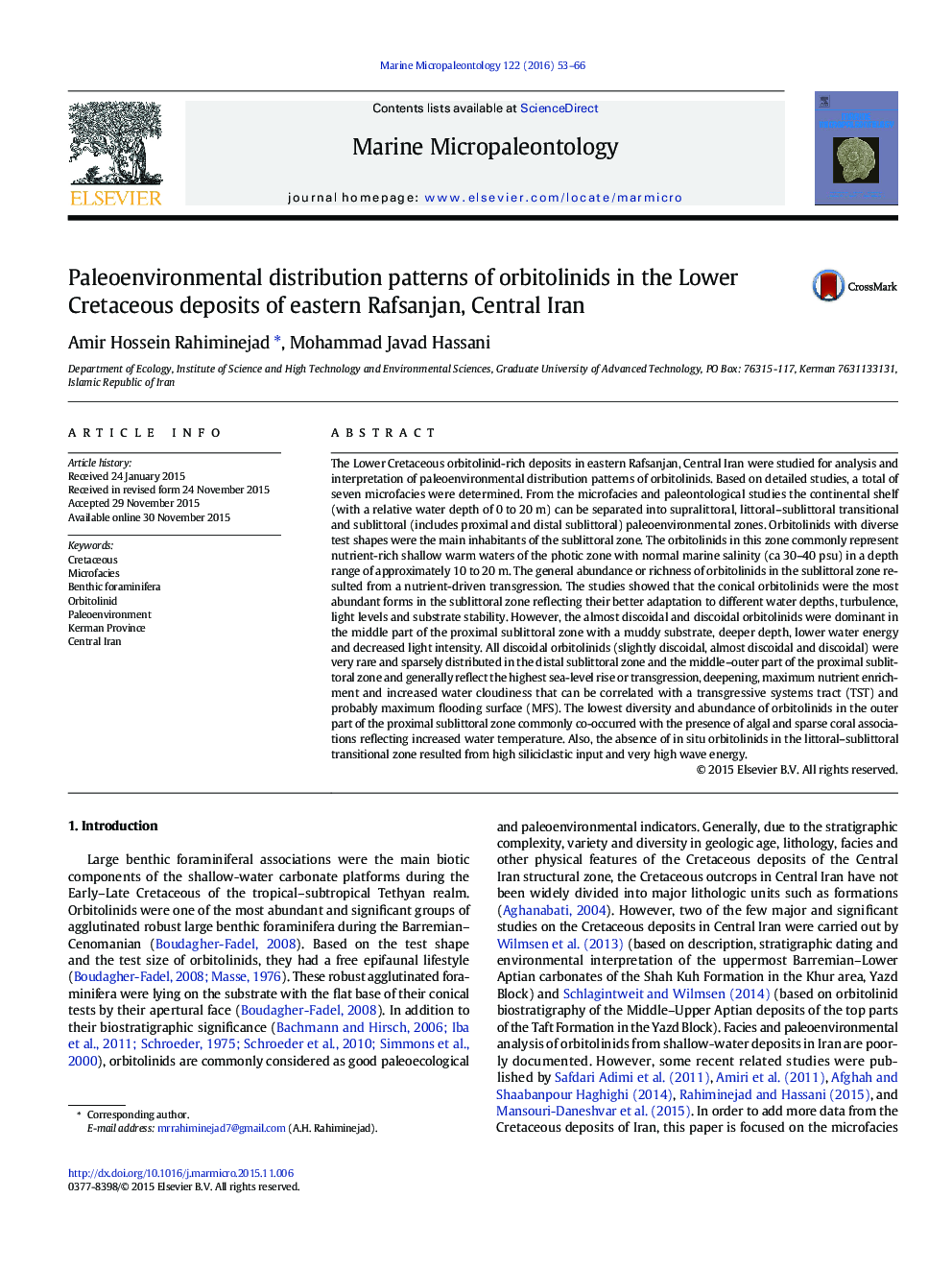| کد مقاله | کد نشریه | سال انتشار | مقاله انگلیسی | نسخه تمام متن |
|---|---|---|---|---|
| 6448557 | 1642163 | 2016 | 14 صفحه PDF | دانلود رایگان |
عنوان انگلیسی مقاله ISI
Paleoenvironmental distribution patterns of orbitolinids in the Lower Cretaceous deposits of eastern Rafsanjan, Central Iran
ترجمه فارسی عنوان
الگوهای توزیع پراکنش محیطی اربیتولینید ها در کرتاسه های پایین تر از شرق رفسنجان، ایران مرکزی
دانلود مقاله + سفارش ترجمه
دانلود مقاله ISI انگلیسی
رایگان برای ایرانیان
کلمات کلیدی
موضوعات مرتبط
مهندسی و علوم پایه
علوم زمین و سیارات
فسیل شناسی
چکیده انگلیسی
The Lower Cretaceous orbitolinid-rich deposits in eastern Rafsanjan, Central Iran were studied for analysis and interpretation of paleoenvironmental distribution patterns of orbitolinids. Based on detailed studies, a total of seven microfacies were determined. From the microfacies and paleontological studies the continental shelf (with a relative water depth of 0 to 20Â m) can be separated into supralittoral, littoral-sublittoral transitional and sublittoral (includes proximal and distal sublittoral) paleoenvironmental zones. Orbitolinids with diverse test shapes were the main inhabitants of the sublittoral zone. The orbitolinids in this zone commonly represent nutrient-rich shallow warm waters of the photic zone with normal marine salinity (ca 30-40Â psu) in a depth range of approximately 10 to 20Â m. The general abundance or richness of orbitolinids in the sublittoral zone resulted from a nutrient-driven transgression. The studies showed that the conical orbitolinids were the most abundant forms in the sublittoral zone reflecting their better adaptation to different water depths, turbulence, light levels and substrate stability. However, the almost discoidal and discoidal orbitolinids were dominant in the middle part of the proximal sublittoral zone with a muddy substrate, deeper depth, lower water energy and decreased light intensity. All discoidal orbitolinids (slightly discoidal, almost discoidal and discoidal) were very rare and sparsely distributed in the distal sublittoral zone and the middle-outer part of the proximal sublittoral zone and generally reflect the highest sea-level rise or transgression, deepening, maximum nutrient enrichment and increased water cloudiness that can be correlated with a transgressive systems tract (TST) and probably maximum flooding surface (MFS). The lowest diversity and abundance of orbitolinids in the outer part of the proximal sublittoral zone commonly co-occurred with the presence of algal and sparse coral associations reflecting increased water temperature. Also, the absence of in situ orbitolinids in the littoral-sublittoral transitional zone resulted from high siliciclastic input and very high wave energy.
ناشر
Database: Elsevier - ScienceDirect (ساینس دایرکت)
Journal: Marine Micropaleontology - Volume 122, January 2016, Pages 53-66
Journal: Marine Micropaleontology - Volume 122, January 2016, Pages 53-66
نویسندگان
Amir Hossein Rahiminejad, Mohammad Javad Hassani,
